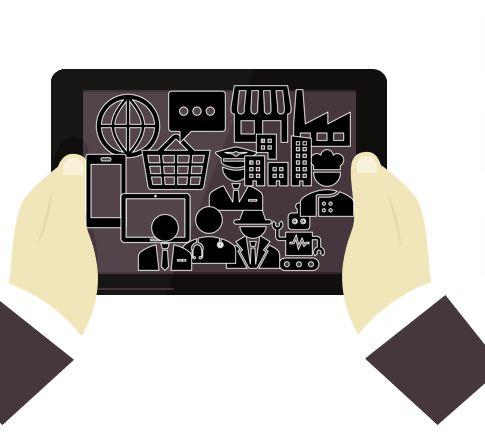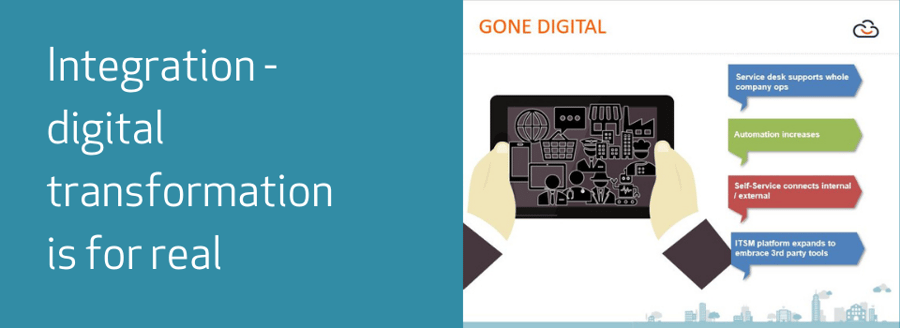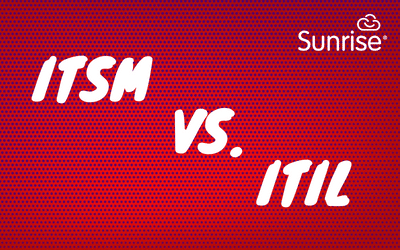There has been much talk in recent years of “digital transformation” and the need to embrace it, regardless of the type and size of business, including the mantra of the more recent ITIL updates.
What does Digital transformation mean to the Service Desk?
Defined as the adoption of digital technology to transform services or businesses, through replacing non-digital or manual processes with digital processes, or replacing first phase digital tech with the latest wave, what it really boils down to is this: businesses nowadays are digital – or at least are being forced down that route, whatever the industry. The impact of COVID-19 and the related lockdowns, forcing what you might call an EFH (Everything From Home) approach, means online transactions – whether through work, shopping or any other activity – are not so much the norm as increasingly the only option for many.
 Essentially every aspect of a business is impacted upon by IT nowadays. This, in turn, has to be reflected in the service management world; the service desk expands to support all company operations, self-service or customer service portals connect the internal and external worlds digitally and transparently, automation is deployed as far as possible and – what the ITSM platform itself cannot achieve has to be supported via 3rd party integration. It’s important to note here too that we are not looking at one of those classic 2-5-year IT windows of change; this is a “right now” requirement, in order for a business to become – or remain – competitive. Or even remain in business. This is no idle, “FUD factor” vendor threat: we are seeing daily examples of businesses – many historically very powerful and seeming indestructible – falling by the wayside as they fail to keep up with the digital transformation so essential to ongoing success; retail and banking being two classic examples.
Essentially every aspect of a business is impacted upon by IT nowadays. This, in turn, has to be reflected in the service management world; the service desk expands to support all company operations, self-service or customer service portals connect the internal and external worlds digitally and transparently, automation is deployed as far as possible and – what the ITSM platform itself cannot achieve has to be supported via 3rd party integration. It’s important to note here too that we are not looking at one of those classic 2-5-year IT windows of change; this is a “right now” requirement, in order for a business to become – or remain – competitive. Or even remain in business. This is no idle, “FUD factor” vendor threat: we are seeing daily examples of businesses – many historically very powerful and seeming indestructible – falling by the wayside as they fail to keep up with the digital transformation so essential to ongoing success; retail and banking being two classic examples.
Businesses therefore need to fully accept the transformation requirement, which includes aspects such as platform migration and potentially embracing concepts such as “evergreen IT” (defined by Microsoft as “running services comprised of components that are always up to date”). Automation is clearly a critical element of that migration, as is the re-alignment and re-allocation of IT structure and resource. The one-time “big bang” approach to IT adds, changes and migrations is giving way to regular, perpetual upgrades and migrations which further promotes automation as being critical to successful digital transformation as it eases that transition. The ability to further quantify the success of the ongoing transformation, by monitoring and analysing user experience, the impact of change and using that data to improve company operations, is now all part of a service desk’s mission.
So, while the phrase “digital transformation” hadn’t even been coined when the artist formerly known as helpdesk came into being, service management is a critical component of that transformation. Moreover, in playing its role within that transformation, it maximises all the key elements of a modern service desk: automation, self-service, cross-company operations and day-to-day monitoring and analysis of those business processes.
Steve Broadhead is a technology journalist, technical researcher & author, guitarist and occasional comedy writer, who brings his unique perspective to the world of ITSM through 30+ years’ association with the IT industry.
Watch the webinar recording of The Integrated Service Desk – extending boundaries adds value




.png)
